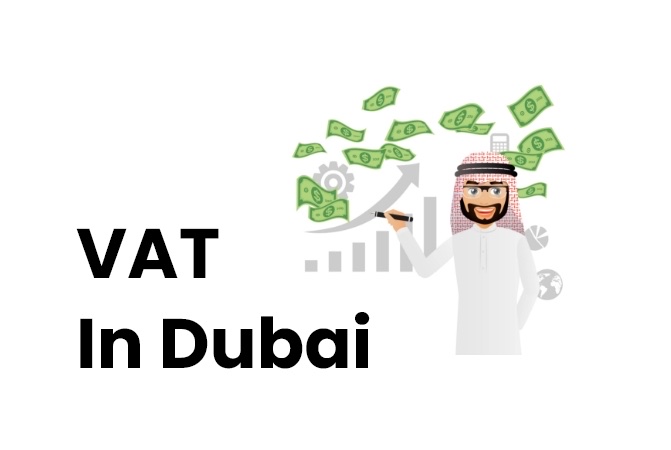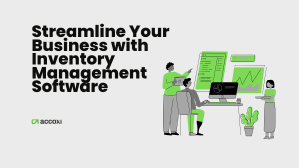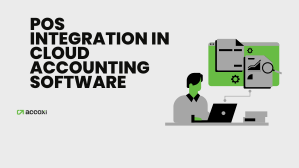

July 03, 2023

Value Added Tax(VAT) is a consumption tax levied on the supply of goods and services in the United Arab Emirates(UAE). It was introduced in the UAE on January 1, 2018, as part of the country’s efforts to diversify its revenue sources and reduce reliance on oil revenues. VAT is a key component of the UAE’s broader strategy to enhance sustainability and support the development of public services and infrastructure.
VAT was introduced in the UAE on January 1, 2018, as part of the government’s efforts to diversify revenue sources and reduce reliance on oil income. It is a broad-based tax that is applied to most goods and services, except for certain exempted and zero-rated items. Accoxi is an exceptional accounting software that helps you with all financial reports and guides you to reach business to new heights.
The standard VAT rate in the UAE is 5%. This means that 5% of the value of most taxable goods and services is added as tax when they are sold or provided. Businesses that are registered for VAT charge this tax to their customers and collect it on behalf of the government. The collected VAT is then paid to the UAE Federal Tax Authority.
Businesses that meet the mandatory registration threshold must register for VAT in the UAE. They are required to file regular VAT returns, usually on a quarterly basis, providing details of their taxable supplies and input tax(VAT on purchases). Payments of VAT liabilities are made to the UAE Federal Tax Authority within specified deadlines.
Some sectors and items are exempt from VAT in the UAE. These include residential properties (first sale within three years of construction), local passenger transport, certain healthcare services, education, and some financial services. However, it’s important to note that specific criteria and conditions may apply to each exemption.
In addition to exemptions, certain goods, and services are subject to VAT at a 0% rate. This means that while VAT is charged on these supplies, the rate is 0 %. Zero-rated items include exports of goods and services, international transportation, some healthcare and educational services, and the supply of precious metals for investment.
Input Tax credit(ITC) is a mechanism that allows registered businesses to claim a credit for the Value added Tax(VAT) they have paid on their purchases (input tax) against the VAT they have collected on their sales (output tax). It helps reduce the overall tax liability for businesses and prevents the cascading effect of taxation on the supply chain.
Registered businesses can generally claim a credit for the VAT they have paid on their purchases(input tax) against the VAT they have collected on their sales(output tax). This mechanism, known as the input tax credit, helps reduce the burden of VAT on businesses.
The registration process can be completed online through the official website of the UAE Federal Tax Authority(FTA). Businesses need to create an account, provide the necessary information, and submit the registration application.
VAT registration in the UAE is a process that businesses need to complete in order to comply with the VAT regulations and participate in the VAT systems. Businesses are required to register for VAT if their annual taxable supplies and imports exceed the mandatory registration threshold. In September 20221, the mandatory registrar ion threshold was set at AED 375,000 of taxable supplies in the previous 12 months. Businesses are encouraged to register for VAT within 30 days from the date they exceed the mandatory registration threshold. After registration, businesses are required to comply with the VAT regulations, maintain proper records and accounting systems, and file regular VAT returns. Typically, VAT returns need to be filled on a quarterly basis, providing details of the taxable supplies, input tax, and output tax.
When a VAT- registered business makes a sale of goods or services, it adds VAT to the selling price. This VAT added to the selling price is called output tax. The business collects this output tax from the customer. The VAT-registered business collects the VAT amount from the customer. This VAT is referred to as VAT collected or output tax. The business can offset the VAT it has paid on its purchases(input tax) against the VAT it has collected on its sales(output tax). The difference between the input tax and output tax is the net amount of VAT payable to the government.
The VAT-registered business must file regular VAT returns with the tax authority to report the VAT collected and paid during a specific period. The V AT return includes details of the sales, purchases, input tax, output tax, and the net VAT payable to the government. It is important to note that VAT is a tax on consumption, and the burden is shifted along the supply chain until it is finally paid by the end consumer, VAT collection ensures that the tax revenue is collected progressively at each stage of the supply chain.
Businesses are responsible for accurately calculating and collecting VAT, maintaining proper records, and complying with VAT regulations.
The implementation of Value Added Tax(VAT) in the UAE has significant implications for various stakeholders, including businesses, consumers, and the overall economy. For businesses, VAT introduces a new administrative burden as they need to incorporate VAT compliance into their operations. This involves implementing new systems, processes, and accounting practices to accurately calculate, collect, and remit VAT. Businesses also face increased costs as they need to account for VAT on their purchases, but they can often recover a portion of this VAT through an input tax credit. Cash flow management becomes crucial as businesses collect VAT from customers but must remit it to the tax authorities within specific deadlines.
Additionally, businesses need to consider pricing implications, deciding whether to absorb the VAT or pass it on to customers, considering competitive factors and consumer behavior.
As the UAE continues to navigate the VAT system, businesses and individuals must remain informed, comply with regulations, and seek professional guidance to adapt to the changes effectively. So therefore in implementing Accoxi, you can check the status of UAE VAT returns.


